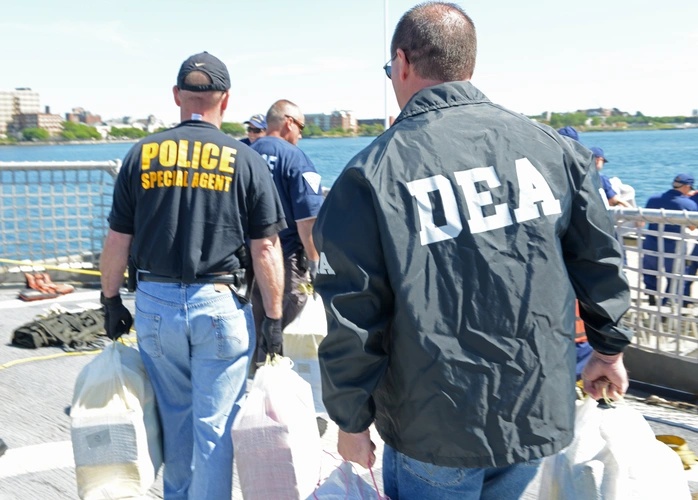Targeting al-Awlaki and International Law
Does international law permit the US government to kill Anwar al-Awlaki? That's the question I examine in a draft article posted here (the paper is forthcoming in the Yearbook of International Humanitarian Law). Taking al-Awlaki as a case study that provides an occasion to grapple with a host of pressing issues associated with the use of lethal force in the counterterrorism context, the article proceeds as follows:
Part I is descriptive, an attempt to establish
Published by The Lawfare Institute
in Cooperation With

Does international law permit the US government to kill Anwar al-Awlaki? That's the question I examine in a draft article posted here (the paper is forthcoming in the Yearbook of International Humanitarian Law). Taking al-Awlaki as a case study that provides an occasion to grapple with a host of pressing issues associated with the use of lethal force in the counterterrorism context, the article proceeds as follows:
Part I is descriptive, an attempt to establish a reasonable baseline of knowledge based on the public record concerning the nature of AQAP and its relationship to al Qaeda "central," the activities of Anwar al-Awlaki and his relationship to AQAP, and the US government's reported decision to authorize the use of lethal force against al-Awlaki in at least some circumstances. Part II turns to UN Charter issues presented by the prospect that such an attack might take place in the territory of Yemen. Under this heading, I first discuss the issue of consent, concluding that a substantial case can be made, at least for now, that the government of Yemen has consented to the use of such force on its territory, thus overcoming an Article 2(4) objection. I next turn to the question whether the United States could make a persuasive Article 51 self-defense argument if necessary, concluding that it can do so in not just one but two distinct ways (one specific to AQAP, the other depending on a sufficient linkage between AQAP and al Qaeda central). Against that backdrop, Part III reviews the implications IHL and IHRL might have for an attack on al-Awlaki. I begin with the question whether an attack on al-Awlaki would fall within IHL’s field of application. I conclude that the threshold of armed conflict has been crossed in two relevant respects. First, I argue that it has been crossed in Yemen itself as between AQAP on one hand and the U.S. and Yemeni governments on the other. Second, I argue that it has been crossed as well with respect to the United States and the larger al Qaeda network—and not only within the geopolitical borders of Afghanistan. Building from these premises, I then proceed to consider whether al-Awlaki could be targeted consistent with IHL’s principle of distinction. I conclude that he can be if he is in fact an operational leader within AQAP, as this role would render him a functional combatant in an organized armed group. Should the analysis instead turn on IHRL, however, the central issue becomes the requirement of necessity inherent in IHRL’s protection for the right-to-life, and in particular the notion of temporal necessity. I conclude that this requirement is not an obstacle to attacking al-Awlaki insofar as (i) there is substantial evidence that he is planning terrorist attacks, (ii) there is no plausible opportunity to incapacitate him with non-lethal means, and (iii) there is not good reason to believe that a plausible non-lethal opportunity to incapacitate him will arise before harm to others occurs. A second question then arises, however. Must al-Awlaki be linked to a specific plot to carry out a particular attack, or is it enough that the evidence establishes that he can and will attempt or otherwise be involved in attacks in the future without specificity as to what the particulars of those attacks might be? The former approach has the virtue of clarity, yet could rarely be satisfied given the clandestine nature of terrorism. The latter approach necessarily runs a greater risk of abuse and thus perhaps justifies an especially high evidentiary threshold, but in any event it is a more realistic and more appropriate approach (particularly from the point of view of the potential victims of future terrorist attacks).Obviously I'm not the first person to speak to these issues. A wide range of talented scholars have done so already, and I view my contribution here merely as an attempt to synthesize their work, to draw attention to that which seems largely agreed and that which remains controversial among them, and to map the resulting legal frameworks onto the available information with as much precision as possible. I don't doubt that I've not achieved these goals as well I could have, and very much encourage readers to email me with any substantive criticisms you may have regarding the paper as a result. A few final notes: First, the paper does not address domestic law issues. That doesn't mean those issues are not important; they just aren't what I set out to explore in this paper. Second, I try to emphasize throughout the paper how factually contingent the ultimate analysis is. Changing facts certainly could alter the analysis at multiple points. At the same time, the factual contingency of the analysis is a useful reminder of how difficult it is to assess the legality of such actions without access to the classified information to which the government has access--and, by extension, it is a reminder of the importance of internal government checking mechanisms--e.g., JAGs, inspectors general, legislative oversight--in this setting, all the more so where judicial involvement is unlikely.
Robert (Bobby) Chesney is the Dean of the University of Texas School of Law, where he also holds the James A. Baker III Chair in the Rule of Law and World Affairs at UT. He is known internationally for his scholarship relating both to cybersecurity and national security. He is a co-founder of Lawfare, the nation’s leading online source for analysis of national security legal issues, and he co-hosts the popular show The National Security Law Podcast.





